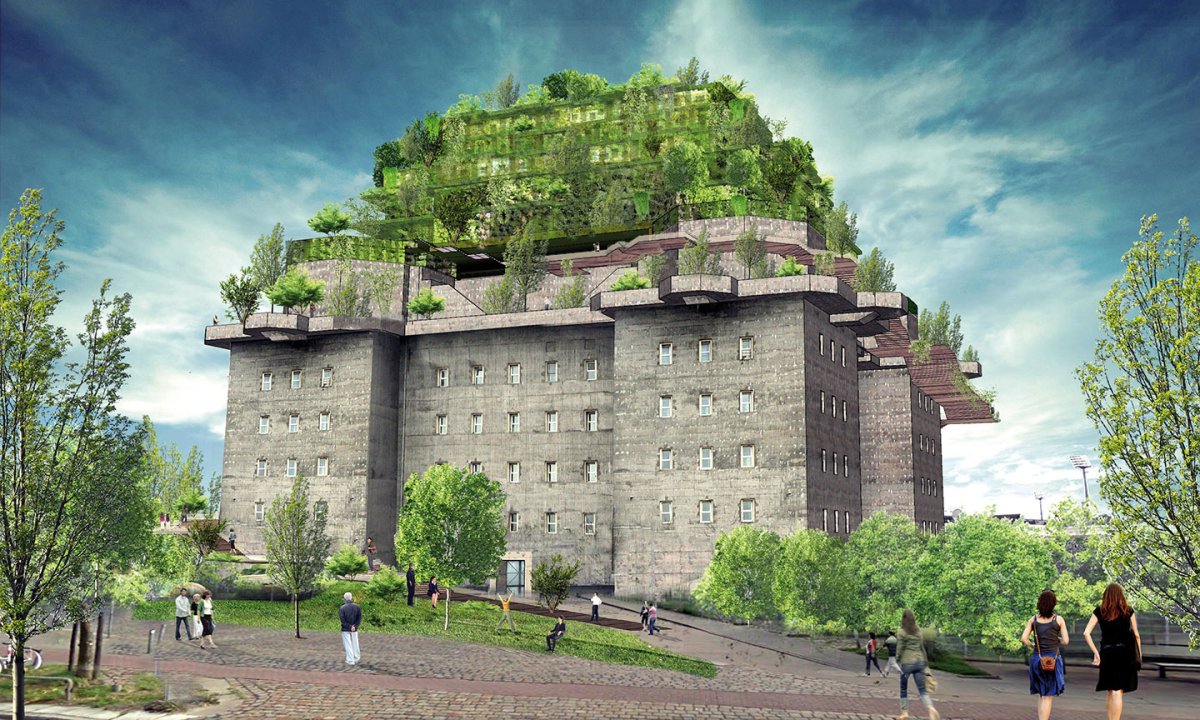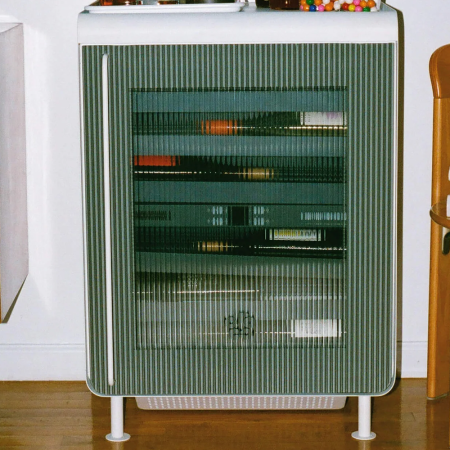In some parts of Germany, it’s difficult to escape the country’s dark past. One highly inescapable example? The giant “flak towers”—massive concrete buildings used as anti-aircraft outposts and bomb shelters—that the Nazis built to defend major cities during World War II.
One such tower, erected in 1942 in just 300 days, stands in the St. Pauli quarter of Hamburg. But if community activists and architects get their way, the monolith will be transformed into an urban paradise. Hatching their plan in 2014, they presented their “Hilldegarden” concept, which basically turns the 131-foot-high building into a multi-tiered vertical community garden.
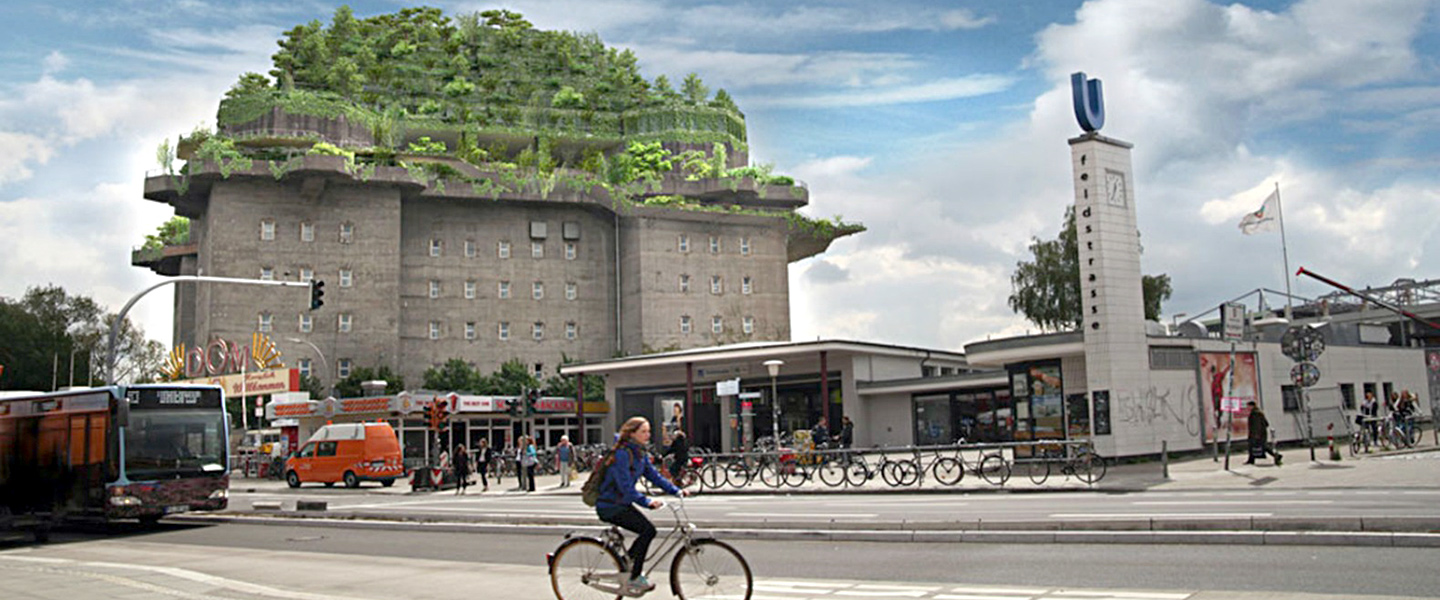
The main garden would be on the building’s roof, only accessible via a snaking walkway or ramp, leading up from ground level (think: New York City’s High Line). The plan is to add an additional 60 feet to the building’s top in the form of the green space.
Along the way up, the building’s old anti-aircraft turrets, which ring its first level up from the street, would also be utilized as areas for additional, smaller community gardens.
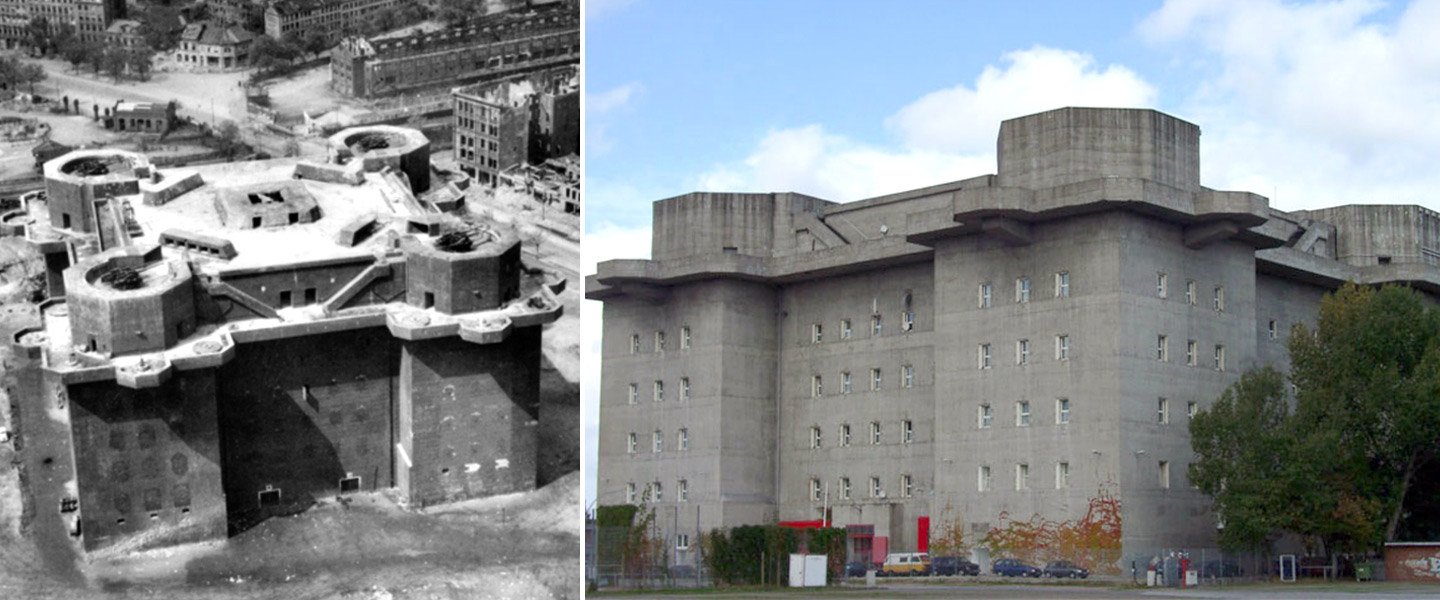
The community group projects that the entire project will cost between $28 million and $33 million.
In the future, the hope is that visitors will look up at the hulking tower and no longer see a remnant of a Nazi past—but a “green mountain.”
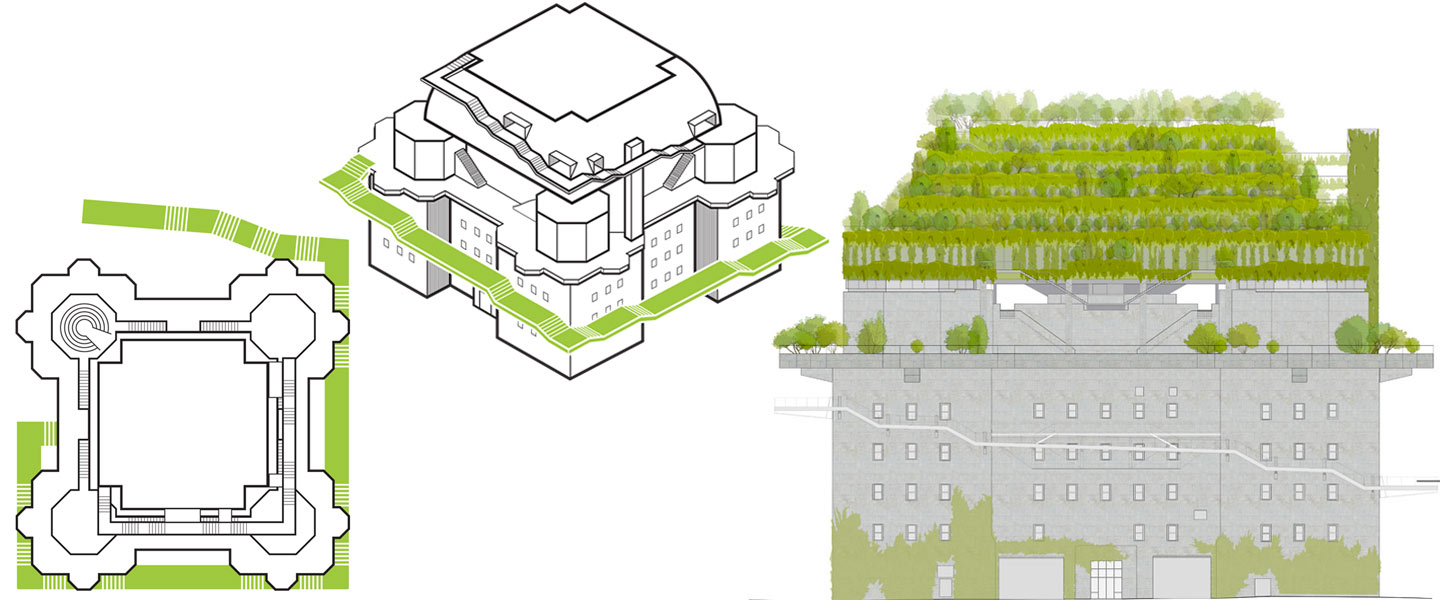
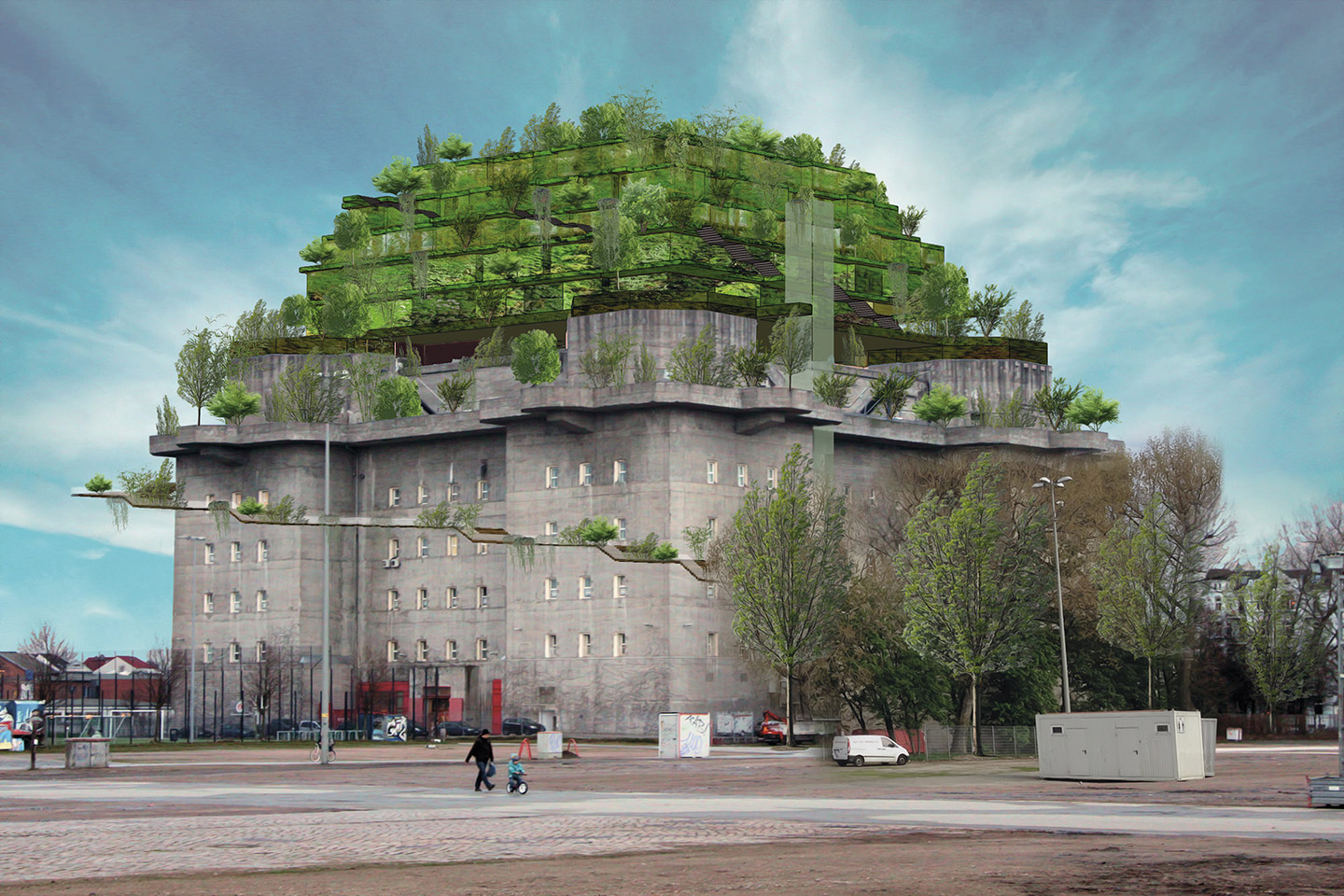
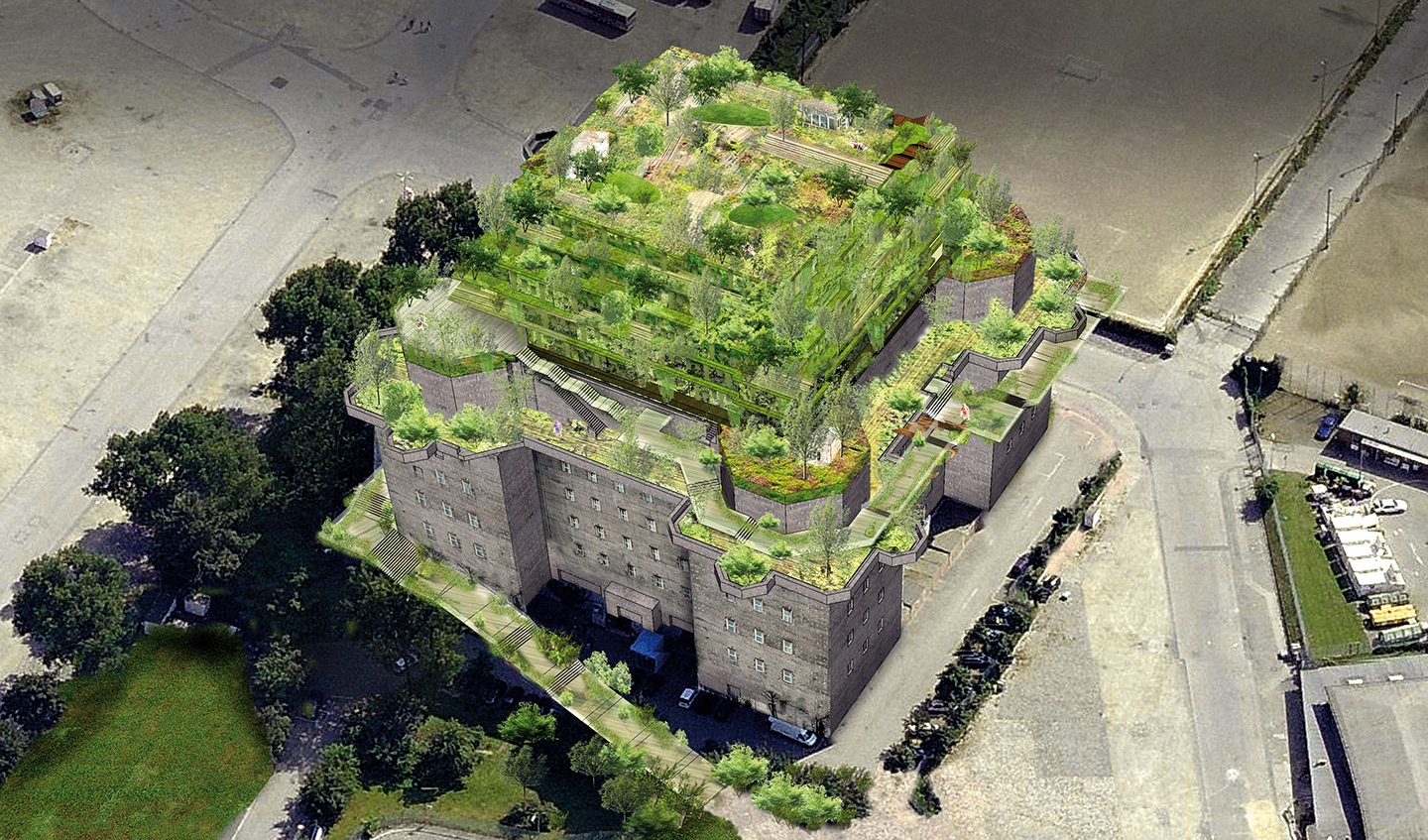
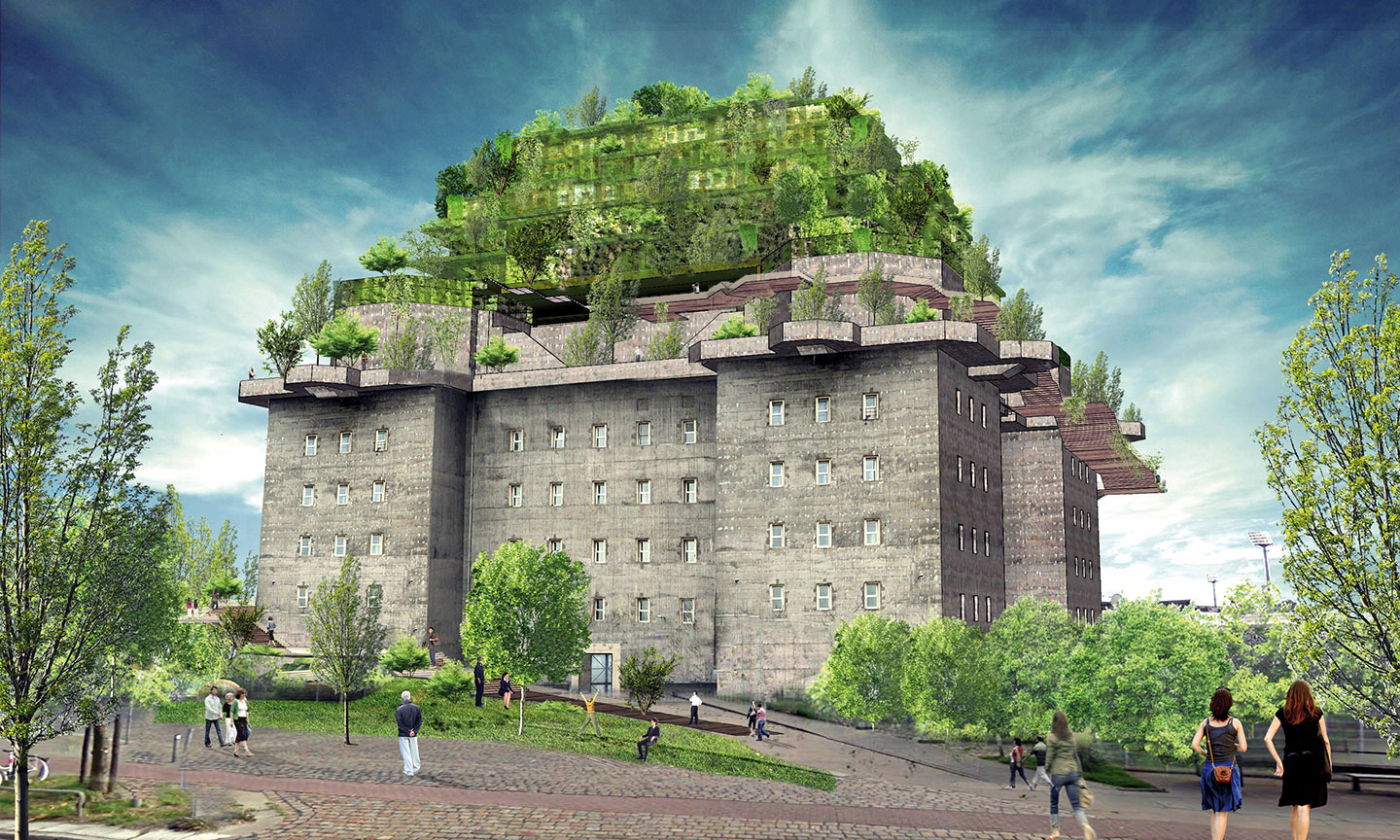
This article was featured in the InsideHook newsletter. Sign up now.
